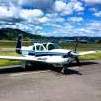M20F Speed Checks... Comparison Please?
-
Members Online
- caractacuspdoom
- pkellercfii
- atpdave
- Slick Nick
- kortopates
- GeeBee
- OneSaltyItalian
- Jsno
- Crawfish
- RACACH
- Fix
- Jasper
- hazek
- hammdo
- dkkim73
- Justin Schmidt
- TCC
- Ibra
- redbaron1982
- jamesyql
- Logwes21
- Sabremech
- Nijntje vliegt
- Vulcan81
- Schllc
- Fysiojohn
- Robert C.
- Utah20Gflyer
- Freddb34
- theoriginalturk
- Ron McBride
- Buckster
- Rick Junkin
- Ragsf15e


Recommended Posts